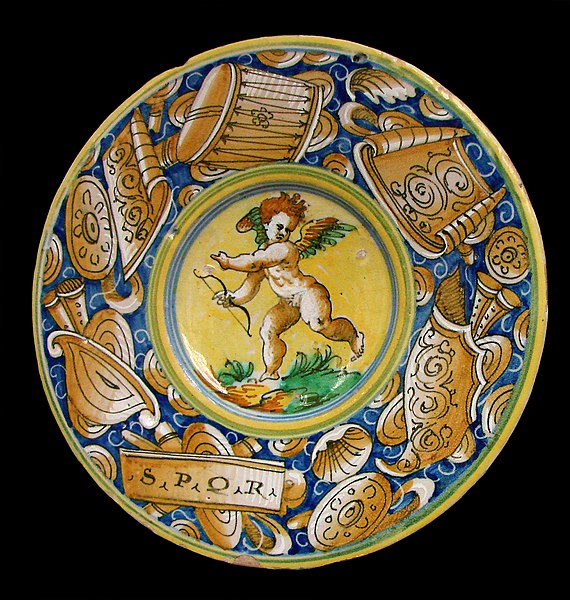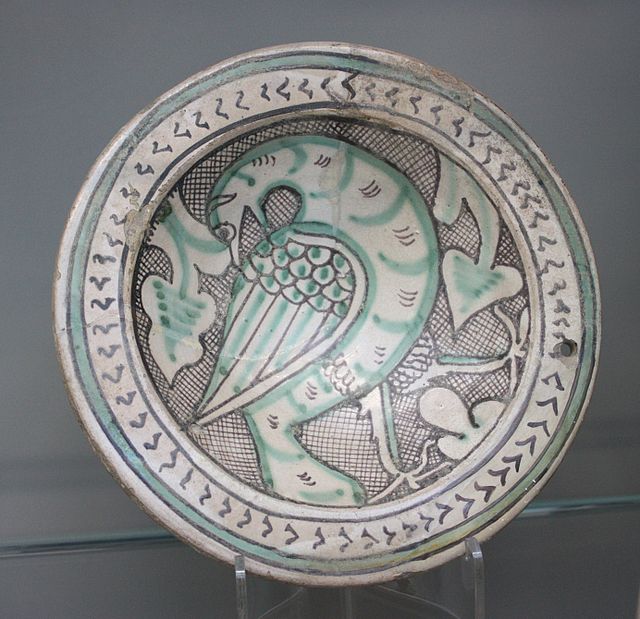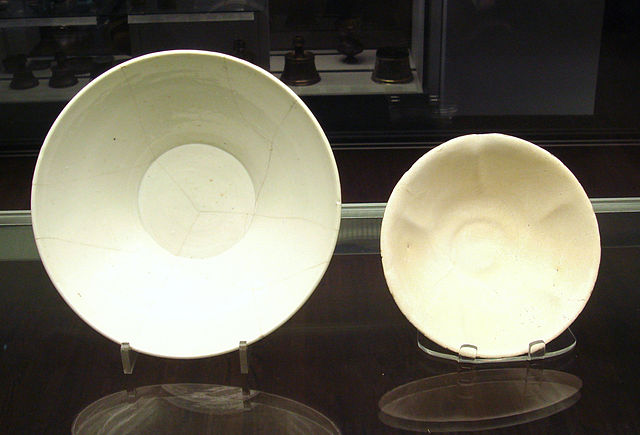Maiolica is tin-glazed pottery decorated in colours on a white background. The most renowned Italian maiolica is from the Renaissance period. These works were known as istoriato wares when depicting historical and mythical scenes. By the late 15th century, multiple locations, mainly in northern and central Italy, were producing sophisticated pieces for a luxury market in Italy and beyond. In France, maiolica developed as faience, in the Netherlands and England as delftware, and in Spain as talavera. In English, the spelling was anglicised to majolica, but the pronunciation usually preserved the vowel with an i as in kite.
Istoriato decoration on a plate from Castel Durante, c. 1550–1570 (Musée des Beaux-Arts de Lille)
Istoriato charger, Faenza, c. 1555 (Dallas Museum of Art)
Dish with bird, in Islamic-derived style, Orvieto, c. 1270–1330 (Victoria and Albert Museum)
Deruta ware dish, 2nd quarter of the 16th century, shows the full range of glaze colors (Victoria and Albert Museum)
Tin-glazed pottery is earthenware covered in lead glaze with added tin oxide which is white, shiny and opaque ; usually this provides a background for brightly painted decoration. It has been important in Islamic and European pottery, but very little used in East Asia. The pottery body is usually made of red or buff-colored earthenware and the white glaze imitated Chinese porcelain. The decoration on tin-glazed pottery is usually applied to the unfired glaze surface by brush with metallic oxides, commonly cobalt oxide, copper oxide, iron oxide, manganese dioxide and antimony oxide. The makers of Italian tin-glazed pottery from the late Renaissance blended oxides to produce detailed and realistic polychrome paintings.
Maiolica charger from Faenza, after which faience is named, c. 1555; Diameter 43 cm, Tin-glazed earthenware
Tin-glazed (Majolica/Maiolica) plate from Faenza, Italy
Chinese porcelain white ware bowl (left), not tin-glazed, found in Iran, and Iraqi tin-glazed earthenware bowl (right) found in Iraq, both 9-10th century, an example of Chinese influences on Islamic pottery. British Museum.
A Hispano-Moresque dish, approx 32cm diameter, with Christian monogram "IHS", decorated in cobalt blue and gold luster. Valencia, c. 1430–1500. Burrell Collection







